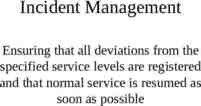Community-Based Approach to Reducing Readmissions Dana Schmitz, MS
27 Slides3.46 MB
Community-Based Approach to Reducing Readmissions Dana Schmitz, MS Program Manager TMF Quality Innovation Network
TMF QIN-QIO Regional Partners TMF has subcontracted with strong, experienced quality improvement partners to provide expert technical assistance and quality improvement support for participating providers across the region. Arkansas Foundation for Medical Care Primaris (Missouri) QIPRO and Ponce Medical School Foundation (Puerto Rico) TMF Health Quality Institute (Texas and Oklahoma) 2
Join the TMF QIN-QIO Website http://www.tmfqin.org Provides targeted technical assistance and engages providers and stakeholders in improvement initiatives through numerous Learning and Action Networks (LANs). The networks serve as information hubs to monitor data, engage relevant organizations, facilitate learning and sharing of best practices, reduce disparities and elevate the voice of the patient. 3
LANs Join any of the following TMFQIN.org networks and you can sign up to receive email notifications to stay current on announcements, emerging content, events and discussions in the online forums. 4
Readmission Landscape 2.6 million Seniors are readmitted annually at a cost of 26 billion every year Increasingly complex patient population: Two-thirds of Medicare beneficiaries 65 years or older have 2 or more chronic conditions; 15% have 6 or more Medicare population is living longer with chronic disease, using more health care services and more likely to be hospitalized, with greater resources required per episode 5
Financial Pressures New payment models incentivize value (outcomes) over volume: MACRA: MIPS, APMs https://qpp.cms.gov/ VBP (MSPB) ACO Episodic Bundled Payment Readmission Reduction Program Transparency of Quality Outcome Measures: Hospital Compare, Nursing Home Compare, Physician Compare; Hospital, NH & HH Star Ratings 6
Meeting the Challenge Utilization of best practices and evidence-based tools Some Common Strategies: Medication Reconciliation Post-discharge appointments Post-discharge phone calls Teach back interventions Risk Stratification 7
Evidence-based Models for High Quality Care Transitions for Older Adults & Caregivers “BOOST” (Better Outcomes for Older Adults Through Safe Transitions) http://www.hospitalmedicine.org/BOOST/ Identify high risk, discharge checklist, teachback, med rec, standardized communication, 72 hr f/u “Project RED” (Re-Engineered Discharge) https:// www.bu.edu/fammed/projectred Enhanced hospital discharge planning, pt. education, telephone support “Care Transition Program” http://www.caretransitions.org Transition coach; Trained volunteers; Empowered patients and caregivers “BPIP” (Best Practices Intervention Packages): Fundamentals of Reducing Hospitalizations http://www.homehealthquality.org/Education/BestPractices.aspx 8
“Transitional Care Model” http://www.transitionalcare.info/home APN coordinates care during and after discharge, pt. self-management Home, SNF, and clinic visits “INTERACT” (Interventions to Reduce Acute Care Transfers) http://interact2.net Communication Tools, Care Paths, Advance Care Planning Tools, and QI tools for nursing homes and SNFs “Bridge Model” http://www.transitionalcare.org/the-bridge-model Social Worker-led coordination with hospital, community & aging network “POLST” (or “MOLST”) (Physician (or Medical) Orders For life Sustaining Treatment) http://polst.org/ Advance care planning 9
Drivers of Rehospitalization Patient Activation Standard, known Processes Transfer of Information 10
Interventions by Driver: Low Patient Activation 11
Interventions by Driver: Lack of Standard, Known Process 12
Interventions by Driver: Inadequate Transfer of Information 13
Interventions Addressing Multiple Drivers 14
Community-Based Approach to Readmission Reductions Collaboration supports better communication and Coordination of Care across providers. Community-based initiatives can address population health and target chronic disease prevention/management. Greater sustainability and support Synergies instead of silos/maximize impact 15
Successful Strategies Leadership support Utilize community data to drive change Build a foundation of trust in the community Collaboration across the care continuum Robust communication and continuity of information 16
Collaboration What am I already tracking to measure my progress, quality and efficiency? What other level of care am I working with? How can we share information? How can we share in progress? 17
Coalition Charter States Mission and Vision Shared Goals and Purpose Set norms and participation expectations Collaboration across levels of care as well as peer to peer Patient-centered Allows providers access to community data in which to benchmark performance 18
Data 19
20
21
Missouri 22
23
Local Initiatives: You are the experts in your local community Passionate Community and Healthcare leaders: parallel activities, connecting the dots QIN-QIO as convener and support of local initiatives to improve care transitions Align goals/efforts to maximize quality measures across the continuum of care Community engagement across providers that impacts patient outcomes
Where to Start: Identify high priority care coordination issues in the local environment and prioritize areas of focus (RCA, Community Health Needs Assessment, etc) Facilitate discussion across care providers, stakeholders & patients to establish shared goals and vision Peer-to-peer sharing Identify/Implement best practices and tools Evaluate current metrics for ongoing process improvement Monitor progress to goals (data/metrics)
Acronyms QIN-QIO: Quality Innovation Network-Quality Improvement Organization MACRA: Medicare Access and CHIP Reauthorization Act of 2015 MIPS: Merit-based Incentive Payment System APMs: Advanced Alternative Payment Models VBP: Value-based Purchasing MSPB: Medicare Spending Per Beneficiary ACO: Accountable Care Organization IMPACT Act: Improving Medicare Post-Acute Care Transformation Act of 2014 CAHPS: Consumer Assessment of Healthcare Providers and Systems 26
Contact Information: Dana Schmitz, MS Program Manager TMF Quality Innovation Network 800-735-6776 [email protected] This material was prepared by TMF Health Quality Institute, the Medicare Quality Innovation Network Quality Improvement Organization, under contract with the Centers for Medicare & Medicaid Services (CMS), an agency of the U.S. Department of Health and Human Services. The contents do not necessarily reflect CMS policy. 11SOWQINQIO-CX-16-75 27
































